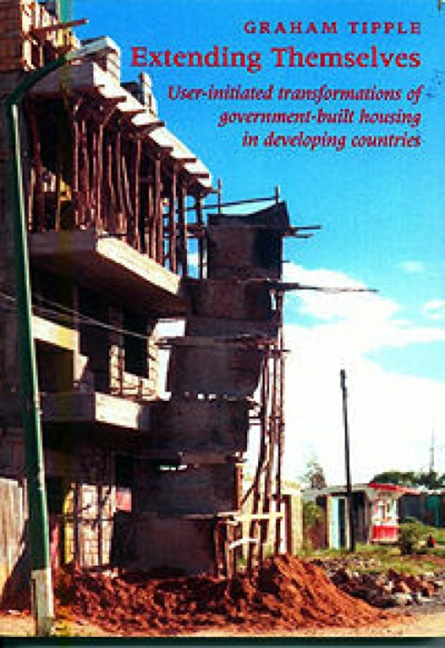 Extending Themselves
Extending Themselves Book contents
- Frontmatter
- Contents
- Acknowledgements
- 1 Introduction
- 2 The housing squeeze
- 3 More than just a dwelling
- 4 The financial element: transformation as an investment
- 5 Sustainability issues
- 6 The transformation process
- 7 The case for transformations
- 8 Policies for enabling transformations
- Appendix 1 Transformations in Bangladesh
- Appendix 2 Transformations in Egypt
- Appendix 3 Transformations in Ghana
- Appendix 4 Transformations in Zimbabwe
- Appendix 5 An assessment of the decision to transform
- References
- Index
7 - The case for transformations
- Frontmatter
- Contents
- Acknowledgements
- 1 Introduction
- 2 The housing squeeze
- 3 More than just a dwelling
- 4 The financial element: transformation as an investment
- 5 Sustainability issues
- 6 The transformation process
- 7 The case for transformations
- 8 Policies for enabling transformations
- Appendix 1 Transformations in Bangladesh
- Appendix 2 Transformations in Egypt
- Appendix 3 Transformations in Ghana
- Appendix 4 Transformations in Zimbabwe
- Appendix 5 An assessment of the decision to transform
- References
- Index
Summary
Widespread practice of transformation
Just as the sheer ubiquity and scale of squatting in the 1960s led writers and officials to argue that something had to be done to allow, regularise and improve such development, we can argue that one part of the case for transformation is its widespread popularity among residents. It is so popular that it may be reasonable to ask whether transformation is a universal phenomenon wherever it is allowed either actively or passively. Our experience is that it certainly seems to be very widespread throughout the developing world. In addition to our study countries, I have seen it in Nigeria, South Africa, Zambia, Kenya, Ethiopia, Guinea, Venezuela, Bahrain, India, Malaysia, Indonesia and the Philippines. Published studies included in the annotated bibliography to our literature review of transformations (Tipple, 1991a) and completed more recently show its occurrence in Algeria (Bouchair, 1984; Kraria, 1989; Angal, 1991), Chile (Arditi et al., 1990; Kellett and Toro, 1990; Sepulveda and Carrasco, 1990), Colombia (Peinado, 1980), Hong Kong (Wojtowicz, 1984), India (Benjamin, 1985; Greger and Steinberg, 1988; Sarkar, 1988; Dasgupta, 1990), Israel (Carmon and Oxman, 1981, 1984a, 1984b, 1986; Carmon and Gavrieli, 1987; Oxman and Carmon, 1989), Libya (El Fortea, 1989), Peru (Fromm, 1985), and South Africa (Beinart, 1971; Andrew and Japha, 1978). Other studies have described it in our study countries – Ameen (1988) in Bangladesh; Aref (1989); Behloul (1991, 1996); Habraken (1980b), Kardash (1990); Kardash and Wilkinson (1991); Sakr (1983), Salama (1997); Steinberg (1984), Tipple et al. (1985, 1986), Wilkinson and Tipple (1987, 1991) in Egypt; and Blankson (1988), Building and Road Research Institute (1970), and Danby (1989) in Ghana.
Some recent unpublished work by Joyce Malombe at HABRI, Nairobi, shows it occurring in some owner-occupier estates in Nairobi though it is markedly absent from rented estates. There is also a body of work arising from our study which has used similar questionnaires and sampling techniques to maintain some comparability. A study in Malaysia, by Azizah Salim, and one in New Delhi, by Alok Dasgupta, are briefly reviewed here to draw out some preliminary findings or observations. We also review some Israeli experience of positive policy towards transformations.
- Type
- Chapter
- Information
- Extending ThemselvesUser Initiated Transformations of Government-built Housing in Developing Countries, pp. 121 - 146Publisher: Liverpool University PressPrint publication year: 2000


